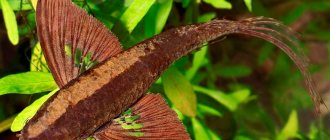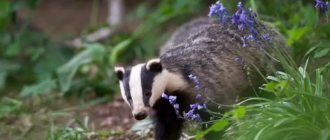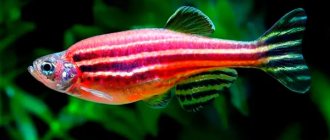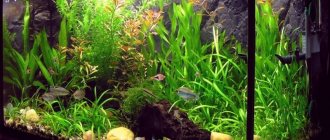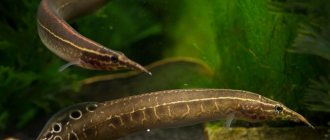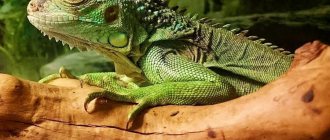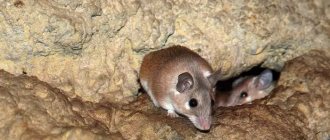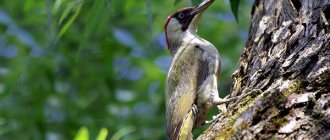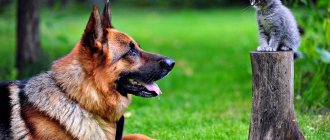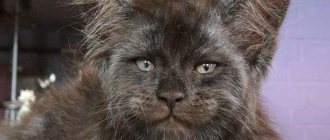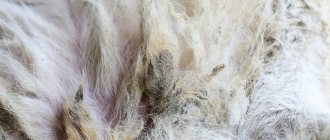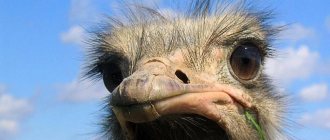The ball fish is a member of the pufferfish or four-tooth family (Tetraodontidae). In nature, they live in tropical and subtropical waters of Africa and Southeast Asia.
Together with hedgehog fish (Diodontidae), it belongs to the order of pufferfish (Tetraodontiformes). Ball fish and hedgehogs are confused because of their ability to inflate into a spiky ball when in danger. It's easy to distinguish.
- The mouth of the ball fish is small, with plump lips. The hedgehog has a large, narrowed beak.
- The hedgehog has one dental plate on its jaws, while the shara fish has two.
- The hedgehog's spines are pressed down and rise when frightened. The shara fish has short spines on its bare skin.
- The body of a hedgehog in a longitudinal section is rectangular, narrowed towards the tail. The ball has a teardrop shape.
Tetraodon or pufferfish (Tetraodon) are common aquarium fish. Habitat: fresh and brackish flowing and standing water bodies, coasts and estuaries of Oceania and the Indian Ocean. 23 species live in nature.
Description
The body is elliptical, narrowing towards the tail. The fins are transparent or with a tinge of skin color, small. The eyes are large. In nature, specimens 5.5–65 cm are found.
Lifestyle and behavior
Active when the backlight is on. At night and after feeding they rest in a shelter.
They swim in search of food in all areas of the aquarium. They love shelters. Predators are territorial and aggressive in a community aquarium. They attack larger fish. Veil fins are torn off.
They chew and eat shellfish and snails—this is their main food. They will eat shrimp and crabs. They bully, pick off plants, but rarely eat. Tend to jump out of the jar.
In aquariums, most species tolerate fresh water. Salting water is advisable for certain species as a stimulus for reproduction.
Dwarf tetraodon is a good choice for a small aquarium
The dwarf tetraodon is the smallest representative of this species from the reservoirs of southern India. It does not grow more than 6 cm in length. The peculiarity of this little guy is the ability to camouflage, changing color to match the environment. Also interesting is its unusual hunting style: the fish hovers over the prey, carefully studies it, examines it, chooses the most appropriate moment and only after that goes on the attack. And all this can go on for so long that even the coretra is able to escape from him!
Kinds
The lifestyle and conditions of keeping tetraodons of different species are similar.
Leopard tetraodon (Tetraodon schoutedeni)
Lives naturally in the lower reaches of the Congo. The sides and back are yellow with black spots. The abdomen is light. In an aquarium it reaches a length of up to 10 cm. They live up to 10 years.
The female is larger than the male. For spawning, the pair is placed in a vessel of 150 liters with plants and shelters. The water temperature is increased to 26–28 °C, and the fish are fed intensively. The female lays up to 250–300 eggs.
Green tetraodon (Tetraodon fluviatilis)
Inhabits brackish standing and flowing water bodies of Southeast Asia. The color of the sides and back is bright yellow with a green tint, with black spots and patterns. The abdomen is white. In an aquarium they grow up to 10–12 cm. They live 8–10 years.
No gender differences were identified. In captivity, for some unknown reason, they do not reproduce.
Dwarf tetraodon (Carinotetraodon travancoricus)
Freshwater fish, lives in standing and flowing waters of southern India. Color ranges from green to yellow-brown. They grow up to 2.5–3.5 cm in length. They live 6–7 years.
It reproduces in the aquarium. In mature males, a dark stripe appears on the abdomen. Females have a rounded abdomen. For splitting into pairs, 6–8 individuals are kept in a species aquarium. For spawning, a pair or harem of males and females is separated. An abundance of plants is necessary. The female willingly lays eggs on mosses. The male, ready for spawning, acquires a contrasting color.
The female lays 8–15 eggs. Caviar from adult fish is isolated. The fry appear after 4–6 days. They are fed with “live dust”, a microworm. Top dressing - mashed hard-boiled egg yolk. After 30–45 days - chopped live and frozen food, brine shrimp.
Diseases and their treatment
Diseases must be treated promptly, otherwise it can lead to the death of fish. The most common diseases:
- Anoxia – lack of oxygen; sign – active respiratory movements and open gills; the fish must be moved to another aquarium rich in oxygen, the water changed, or aeration turned on;
- Cold - due to low air temperature, the fish becomes lethargic and lifeless;
- Chlorine poisoning – due to a drop in water quality, fish become inactive and lose their appetite;
- Fungal diseases - mold or moss-like growths appear on the skin of the fish; such fish must be isolated, water replaced, equipment disinfected;
- Gastrointestinal disorders are a predator that requires animal food; otherwise the fish may even die.
Content
The degree of whimsicality depends on the type of tetraodon. Dwarf species adapt better.
Requirements for an aquarium
- Vessel of any shape. Container for dwarf fish from 15 liters per individual. For one 10–15 cm - from 150 liters. For a flock - 70–80 liters per fish.
- Ground and decorations without sharp fragments. Tetraodons have no scales and their skin is sensitive. A dense substrate will help with cleaning. Prevents penetration of organic matter into the lower layers of soil.
- Plants and driftwood provide shelter for fish. They may begin to spoil the foliage, but not necessarily and not all types.
- Fish are voracious and produce a lot of waste. External filtration is required. Capacity: 7–10 aquarium volumes per hour. Aeration if the vessel is overcrowded.
- Water temperature: 23–28 °C.
- Hardness: 1.5–9 °F.
- Acidity: pH 6.5–8.
- The lighting is standard, luminous flux 40–60 lumens per liter of capacity. Cold-light fluorescent and LED lamps (from 6000 K) with high luminous efficiency are preferred. Daylight hours are 10–12 hours.
Care
Change 1/4 of the water volume once a week. Clean the bottom of the aquarium of waste as needed. Accumulating excrement and food debris acidify the water.
Poisonous or not
Most members of the family have the ability to produce poison. Scientists still argue about the validity of this statement. The amount of a hazardous substance may increase and change depending on the age, habitat and diet of the fish. The active substance of the poison is called a neurotoxin.
High levels of neurotoxin have been recorded in reproductive organs, intestines and skin. There is an assumption that the ball fish accumulates substances that entered its body after eating food that contained a bacterium that originally contained a neurotoxin. This statement has been proven through a number of experiments. When eating food that did not contain the neurotoxin, the fish remained safe and did not produce poison. This confirms the theory that the poison comes into the body from outside and spreads through the bloodstream.
Yandex pictures
Feeding
Tetraodon's main food is snails. Fish teeth grow continuously. If they don’t grind off on the sink, you’ll have to do it manually. Considering the thorns, this is an unpleasant procedure. Otherwise, the fish lose their appetite and get sick.
View this post on Instagram
Posted by My Puffer Fish And Turtles (@my_puffer_fish_and_turtles) May 5, 2022 at 4:57 am PDT
Let's give bloodworms, coretra, tubifex. Coretra is preferred: it is not particularly high in calories and forces the fish to hunt. Live food obtained from natural bodies of water can be dangerous due to toxins, parasites and infection. Use trusted suppliers.
Frozen food, sea fish fillets, shrimp meat, and boiled beef liver are suitable. If they eat plants, add plant food to the diet. Cucumber and cabbage, pumpkin and zucchini. Fortified food - crushed oatmeal, flakes.
Interesting things about urchin fish
• Spikes are highly modified scales that form a protective chain mail on the fish’s body; • Residents of one island in the Pacific Ocean made military helmets from the dried bodies of urchin fish; • Urchin fish are eaten in some countries and are considered a delicacy. But they can be eaten only after they have undergone special cooking. But such a delicacy can be very dangerous. If urchin fish is prepared by an inexperienced cook, it may turn out to be poisonous; • In the Far East, dried urchin fish or products made from their skin, such as lampshades, are sold. Chinese lanterns are also made from dried fish in a swollen state.
Compatibility
Tetraodon does not get along well with other fish species. Eats small ones. Dwarfs eat fins.
Dwarf species are not compatible with large predators. Both could die. Tetraodons from 10 cm are capable of defending themselves. A fish with spikes swollen like a ball will take away the appetite of a voracious catfish. Experienced aquarists recommend not experimenting, but keeping them in a species aquarium.
Natural habitat
In natural conditions, it feels comfortable in the middle and lower layers of water. Widely distributed in warm ocean waters. For hunting it prefers to choose coastal zones. The fish are well adapted to fresh and sea waters. It has been noted that certain subspecies are able to travel, moving from salt waters to fresh ones. The motivation for changing habitat is the search for food or spawning.
In its natural environment, the inhabited ball fish has no enemies. This statement is especially relevant for poisonous representatives of the species. The fish is able to repel even the most aggressive predator. There have been recorded cases of finding the bodies of sharks that died as a result of poisoning from the poison of ball fish.
The only dangerous creature for her is a person who has learned to use the poisonous one for personal gain.
“The venom of dangerous fish in minimal doses is used to produce medicines with an analgesic effect”
Yandex pictures
Photo gallery
Varieties
More than a hundred species have been recorded in nature, each of which has characteristic features expressed in external signs and behavioral characteristics. Most of the representatives look similar and have key properties expressed in the form of self-defense. The species we know are natural and the result of evolution.
Pelagic
One of the safest species is called pelagic. The body size of the spiny fish is thirty centimeters. It has a pointed anal and dorsal fin. The upperparts and flank are blue with a slight mottled pattern. The abdomen is convex and silvery. There are dark stripes at the bottom of the head. There is no data on the presence of poison in the body of a specific species. In its natural environment, it tends to live in the water column, not being attached to reefs. It feeds on various representatives of zooplankton and fish larvae.
Yandex pictures
Black spotted
Prefers to live at a depth of thirty to sixty meters. Likes to settle on reefs. Thanks to its external characteristics, it received a telling name - hedgehog fish. It is quite large in size. The length of its round body ranges from forty to sixty centimeters. The light-colored body of the hedgehog is abundantly covered with short spines. The surface of the entire body, shaped like a ball, is covered with small spots that may have a light edge.
“The dried bodies of fish are used to create lampshades and Chinese lanterns.
Yandex pictures
Common or spotted fin
In terms of external characteristics, it is similar to representatives of the species described above. The body has the shape of a small ball with spots scattered over the entire surface. They are especially active on all the fins of the creature. The abdomen is light in color. The dorsal and anal fins are rounded, and on the tail stem there is a row of spines below.
Yandex pictures
Long-needle
The species in question is quite popular among breeders. It is often purchased for aquarium keeping. It has a miniature round body with dark spots on the back. Aquarium specimens reach fifteen centimeters in length. Representatives of their natural habitat can grow up to fifty. Large brown spots are located near the eyes. The rest of the body is covered with small dark spots. The caudal peduncle is without spines. The abdomen is painted in light shades. The fins are clean and transparent, without spots. The spines of the long-spined hedgehog do not contain poison. It is present only in the internal organs of the creature. In a calm state, the spines are pressed to the body. The inflated fish releases its spines and prepares for defense.
The ball fish is a dangerous but fascinating creature. Keeping the breed in a home aquarium requires a responsible and attentive attitude towards the pet. Before purchasing, you must study all known information about a particular species. With proper care, the fish will delight you with its presence for many years.
Yandex pictures
Interesting Facts
- A dog fish's teeth grow throughout its life. Therefore, it is necessary to give snails: by breaking the shell, the tetradon grinds down its teeth;
- To make a fish swell like a ball, the easiest way is to pull it out of the water. However, this is not recommended: it is not good for the health of the fish, and the owner may get burned by the poison from the thorns on the predator’s skin;
- A special organ helps the tetradon swell: it fills with water or air, and when the danger disappears, it gradually deflates;
- Many tetradons like to bury themselves in the ground, leaving only their muzzle on the surface.
